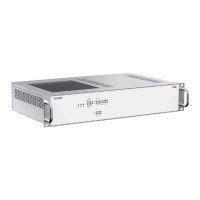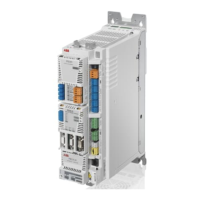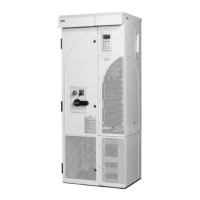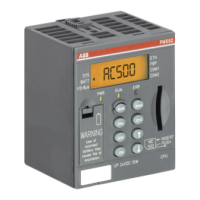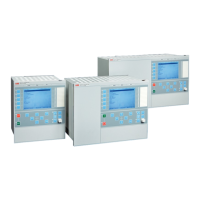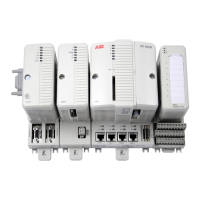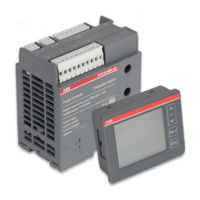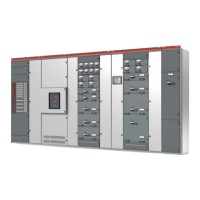Introduction Page: 9 Communication The IED supports the IEC 61850 standard and its specified GOOSE, MMS and SAV/SMV communication profiles.
Ethernet Redundancy IEC 61850 specifies a network redundancy scheme that improves system availability via parallel redundancy protocol PRP-1.
Process Bus IEC 61850-9-2 defines transmission of Sampled Measured Values within the substation automation system.
PCM600 Tool PCM600 offers all the necessary functionality to work throughout all stages of the IED life cycle.
Connectivity Packages Software components that enable system tools to communicate with an IED and create configuration structures.
About This Manual Provides instructions on operating, monitoring, controlling, and setting the IED after commissioning.
Intended Audience Addresses operators who work with the IED daily and have basic protection equipment knowledge.
Document Conventions Explains formatting, abbreviations, symbols, and notation used throughout the manual.
Symbols Details warning, caution, information, and tip icons used to convey hazards and advice.
Document Revision History Provides a log of document revisions, product versions, and their respective release dates and history.
Related Documentation Indicates where to download product series and product-specific manuals from the ABB Web site.
Commissioning Page: 21 Checking Power Supply Verifies that the auxiliary supply voltage is within the permissible range and polarity is correct.
Authorizations Details the predefined users, their rights, and password management for accessing the IED.
User Authorization Describes user roles (Viewer, Operator, Engineer, Administrator) and their access privileges within the WHMI.
Communication Settings Covers IP addresses, DHCP servers, station communication ports, and protocols like IEC 61850.
Testing IED Operation Procedures for activating test modes to simulate functions and outputs without live inputs.
Testing Functions How to activate or deactivate output signals for protection or other functions to test their operation.
IED Operation Page: 28 Web HMI The primary user access service providing encryption and secure identification via HTTPS protocol.
Authorization Details predefined users, rights, and password management for WHMI access.
Using the Web HMI Guides on accessing WHMI via HTTPS protocol, logging in with proper user rights.
Logging In Step-by-step instructions for opening a browser, entering the IED's IP address, and logging in.
Logging Out Describes automatic logout after session timeout and manual logout procedure.
User Interface Explains the structure of the WHMI interface: View bar, Parameter menu, and Information area.
Menu Structure Details the Parameter menu structure, divided into IED Configuration and Application Configuration.
Using Web HMI Help Explains how to use context-sensitive help within the WHMI by clicking the information icon.
Identifying the Device Instructions to find device information like revision and serial number via the Information menu.
Showing Parameters Explains how function block settings are hidden when the function is 'Off' and visible when 'On'.
Editing Values Step-by-step guide on how to edit parameter values, including min/max limits and step values.
Committing Settings Explains how editable values are stored and changes are written and committed atomically.
Web HMI Views Illustrates different views accessible via the WHMI View bar, such as Dashboard and Single Line Diagram.
Dashboard View Displays the IED version, current operating status, latest events, and alarms.
Alarms View Shows the status of programmable virtual LEDs, indicating operational states and alarms.
About View Displays basic device information, links to open source usage declaration, and license request generation.
Measurements View Presents phasor diagrams for currents and voltages, allowing monitoring of electrical measurements.
Fault Records View Lists all available fault records with timestamp, fault number, source, and protection function.
Report Summary Allows saving events, fault records, disturbance records, parameters, and log files in various formats.
Backups View Provides options to take and restore backups of connected devices, showing connection status.
IED Parameterization Describes setting IED parameters via WHMI or PCM600, based on network conditions and equipment characteristics.
Monitoring Details how to monitor IED operation via indicator LEDs, virtual LEDs, and event views.
Indications Describes monitoring via four indicator LEDs, programmable virtual LEDs on WHMI, and event views.
Recorded Data Explains that the IED collects data for post-fault analysis, including disturbance records, fault records, and events.
IED Self-Supervision Handles internal run-time fault situations, indicated by a flashing green Ready LED, and records system data.
Monitoring Events Lists events produced by the application configuration, with options to stop updating, save, or clear them.
Remote Monitoring Using PCM600 and WHMI to read records, analyze data, create records, and monitor values remotely.
Controlling Provides an overview of controlling operations, including the use of the single-line diagram interface.
Controlling SLD Buttons How to control buttons on the WHMI Single Line Diagram (SLD) like any other controllable object.
Troubleshooting Page: 60 Internal Faults Indicates that internal faults are shown in the WHMI event list with text, code, date, and time.
Warnings Details how warnings appear in the WHMI event list with text, code, date, and time, and how to clear them.
Correction Procedures Provides procedures for rebooting software, restoring factory settings, and setting passwords.
Rebooting the Software Steps to reboot the software in case of data loss or file system errors, restoring default settings.
Setting Passwords Instructions on setting user passwords via WHMI or PCM600 and contacting support if lost.
Introduction Page: 9 Communication The IED supports the IEC 61850 standard and its specified GOOSE, MMS and SAV/SMV communication profiles.
Ethernet Redundancy IEC 61850 specifies a network redundancy scheme that improves system availability via parallel redundancy protocol PRP-1.
Process Bus IEC 61850-9-2 defines transmission of Sampled Measured Values within the substation automation system.
PCM600 Tool PCM600 offers all the necessary functionality to work throughout all stages of the IED life cycle.
Connectivity Packages Software components that enable system tools to communicate with an IED and create configuration structures.
About This Manual Provides instructions on operating, monitoring, controlling, and setting the IED after commissioning.
Intended Audience Addresses operators who work with the IED daily and have basic protection equipment knowledge.
Document Conventions Explains formatting, abbreviations, symbols, and notation used throughout the manual.
Symbols Details warning, caution, information, and tip icons used to convey hazards and advice.
Document Revision History Provides a log of document revisions, product versions, and their respective release dates and history.
Related Documentation Indicates where to download product series and product-specific manuals from the ABB Web site.
Commissioning Page: 21 Checking Power Supply Verifies that the auxiliary supply voltage is within the permissible range and polarity is correct.
Authorizations Details the predefined users, their rights, and password management for accessing the IED.
User Authorization Describes user roles (Viewer, Operator, Engineer, Administrator) and their access privileges within the WHMI.
Communication Settings Covers IP addresses, DHCP servers, station communication ports, and protocols like IEC 61850.
Testing IED Operation Procedures for activating test modes to simulate functions and outputs without live inputs.
Testing Functions How to activate or deactivate output signals for protection or other functions to test their operation.
IED Operation Page: 28 Web HMI The primary user access service providing encryption and secure identification via HTTPS protocol.
Authorization Details predefined users, rights, and password management for WHMI access.
Using the Web HMI Guides on accessing WHMI via HTTPS protocol, logging in with proper user rights.
Logging In Step-by-step instructions for opening a browser, entering the IED's IP address, and logging in.
Logging Out Describes automatic logout after session timeout and manual logout procedure.
User Interface Explains the structure of the WHMI interface: View bar, Parameter menu, and Information area.
Menu Structure Details the Parameter menu structure, divided into IED Configuration and Application Configuration.
Using Web HMI Help Explains how to use context-sensitive help within the WHMI by clicking the information icon.
Identifying the Device Instructions to find device information like revision and serial number via the Information menu.
Showing Parameters Explains how function block settings are hidden when the function is 'Off' and visible when 'On'.
Editing Values Step-by-step guide on how to edit parameter values, including min/max limits and step values.
Committing Settings Explains how editable values are stored and changes are written and committed atomically.
Web HMI Views Illustrates different views accessible via the WHMI View bar, such as Dashboard and Single Line Diagram.
Dashboard View Displays the IED version, current operating status, latest events, and alarms.
Alarms View Shows the status of programmable virtual LEDs, indicating operational states and alarms.
About View Displays basic device information, links to open source usage declaration, and license request generation.
Measurements View Presents phasor diagrams for currents and voltages, allowing monitoring of electrical measurements.
Fault Records View Lists all available fault records with timestamp, fault number, source, and protection function.
Report Summary Allows saving events, fault records, disturbance records, parameters, and log files in various formats.
Backups View Provides options to take and restore backups of connected devices, showing connection status.
IED Parameterization Describes setting IED parameters via WHMI or PCM600, based on network conditions and equipment characteristics.
Monitoring Details how to monitor IED operation via indicator LEDs, virtual LEDs, and event views.
Indications Describes monitoring via four indicator LEDs, programmable virtual LEDs on WHMI, and event views.
Recorded Data Explains that the IED collects data for post-fault analysis, including disturbance records, fault records, and events.
IED Self-Supervision Handles internal run-time fault situations, indicated by a flashing green Ready LED, and records system data.
Monitoring Events Lists events produced by the application configuration, with options to stop updating, save, or clear them.
Remote Monitoring Using PCM600 and WHMI to read records, analyze data, create records, and monitor values remotely.
Controlling Provides an overview of controlling operations, including the use of the single-line diagram interface.
Controlling SLD Buttons How to control buttons on the WHMI Single Line Diagram (SLD) like any other controllable object.
Troubleshooting Page: 60 Internal Faults Indicates that internal faults are shown in the WHMI event list with text, code, date, and time.
Warnings Details how warnings appear in the WHMI event list with text, code, date, and time, and how to clear them.
Correction Procedures Provides procedures for rebooting software, restoring factory settings, and setting passwords.
Rebooting the Software Steps to reboot the software in case of data loss or file system errors, restoring default settings.
Setting Passwords Instructions on setting user passwords via WHMI or PCM600 and contacting support if lost.
